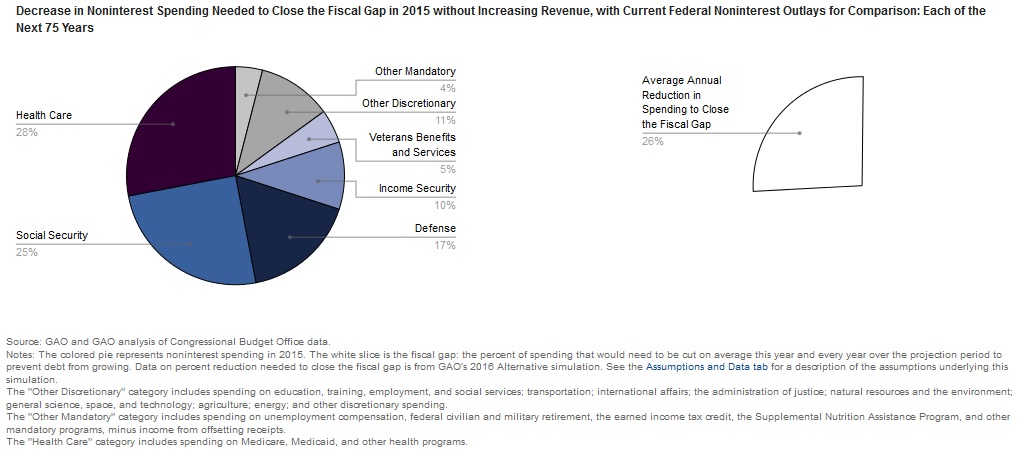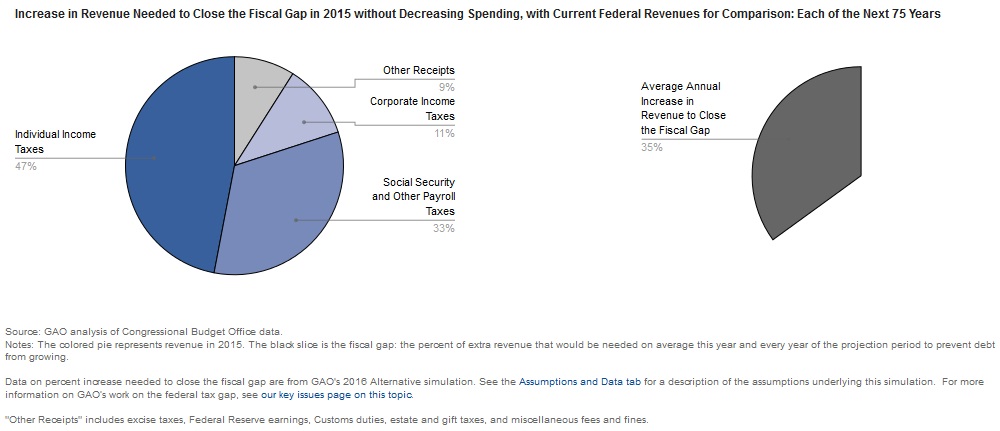Taking a Long Look at the Federal Budget
What’s the future of the federal budget? Since 1992, we have simulated how different policies would affect the federal deficit and debt. Our latest update, released Monday, shows that the federal government continues to face long-term fiscal challenges.
The future holds more debt
In our most recent update, we again found 3 key drivers of the nation’s growing debt:
- the amount of revenue—money collected to fund the federal government—doesn’t cover current spending,
- the amount of net interest on the federal debt, and
- spending on health care, which in turn is driven both by demographics, like an aging population, and rising health care costs that, while not growing at the rate they once were, continue to increase.
This is unsustainable. Unless revenue and spending are balanced, spending in some areas, such as Medicare or Social Security, will take up a growing share of the economy, while spending in other areas, like education or defense, will be squeezed. Moreover, this imbalance limits options for how the nation can respond to future challenges.
Mind the gap
[2/10/16: The percents for closing the fiscal gap were each changed by 1% due to an error in the earlier post.]
For this update, we also show how current spending and revenue need to change just to have the same level of debt in 2089 as in 2015. The amount of change needed is referred to as the fiscal gap.
The government has two levers for closing the fiscal gap.
One, cut spending (while keeping revenue steady). This would mean cutting programs by an average of 26%—every year, for the next 75 years. By 2089, the nation’s debt would still be today’s share of GDP.
 (Excerpted from Federal Fiscal Outlook)
(Excerpted from Federal Fiscal Outlook)
Two, raise revenue (while keeping the same spending levels). Closing the fiscal gap this way would require growing revenue by an average of 35% a year—again, for the next 75 years.
 (Excerpted from Federal Fiscal Outlook)
(Excerpted from Federal Fiscal Outlook)
Those are obviously tough propositions. Most likely, the government will have to do some combination of both. And until it takes action, the situation will only get worse, requiring even sharper spending cuts or steeper revenue hikes.
To learn more about the options, assumptions, and the debt in general, check out our full body of work on the Fiscal Outlook & the Debt.
- Questions on the content of this post? Contact Susan Irving at irvings@gao.gov.
- Comments on GAO’s WatchBlog? Contact blog@gao.gov.

GAO's mission is to provide Congress with fact-based, nonpartisan information that can help improve federal government performance and ensure accountability for the benefit of the American people. GAO launched its WatchBlog in January, 2014, as part of its continuing effort to reach its audiences—Congress and the American people—where they are currently looking for information.
The blog format allows GAO to provide a little more context about its work than it can offer on its other social media platforms. Posts will tie GAO work to current events and the news; show how GAO’s work is affecting agencies or legislation; highlight reports, testimonies, and issue areas where GAO does work; and provide information about GAO itself, among other things.
Please send any feedback on GAO's WatchBlog to blog@gao.gov.
